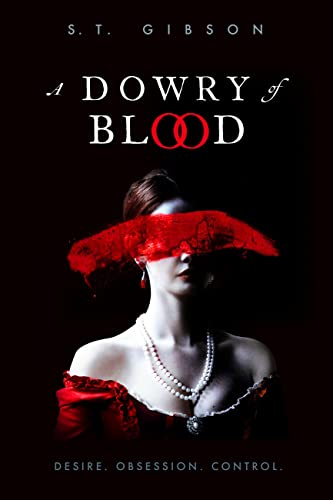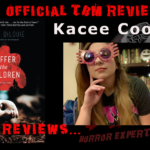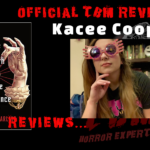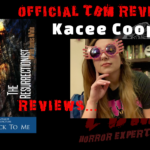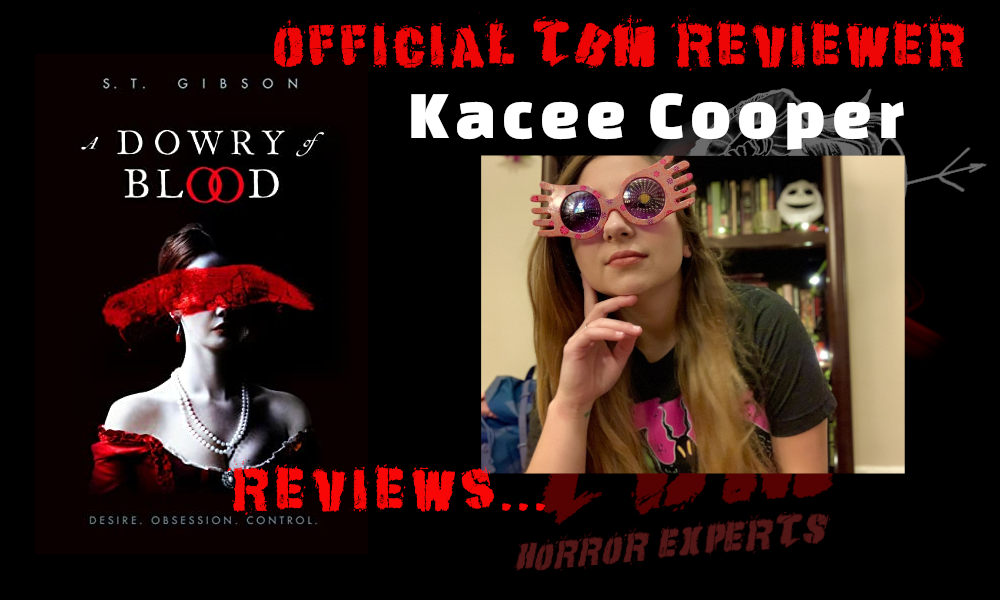
“If you can still hear me wherever you are, my love, my tormentor, hear this: It was never my intention to murder you. Not in the beginning, anyway.”
If one were to ask why the horror genre as a whole is so vast and will, no pun intended, never die, and why many fans of horror are so steadfastly devoted to the genre, the answer is partly because horror has the ability to transcend the confines of whatever content is being depicted in a novel or film and provide a platform to discuss the ugly parts of society that are often covered up or left unsaid. One important recurring motif in horror is having a female protagonist take her power back from the oppressor and transforming herself from a victim to a survivor. Dowry of Blood by S.T. Gibson includes this motif, for the power dynamics present in the novel are what helps to define each character in regards to their relationship, specifically who has the power and who is powerless.
Given the name Constanta the moment she is reborn as a vampire, she details her life as a vampire bride in a series of letters addressed to her apparently deceased husband. Although he is never named, readers are safe to assume that Constanta’s sire and husband is Count Dracula, the vampire from Bram Stoker’s 1897 novel of the same name. All true horror fans know of Dracula, as he is often donned the title of the first official vampire represented in literature.
The heavy layers of sensuality present in Dracula have romanticized him as a lethal lover as opposed to a vicious, blood-sucking killer.
Kacee Cooper
Stoker wrote Dracula to be a powerful villain, as charming as he is intelligent, and can mesmerize any person he chooses as a victim. The heavy layers of sensuality present in Dracula have romanticized him as a lethal lover as opposed to a vicious, blood-sucking killer. The vampire characterization arc has shifted and grown and transformed over the decades, yet the seductive nature of Dracula as a character remains consistent. However, S.T. Gibson’s Dowry of Blood gives readers a version of the Dracula love story unlike any other by dismantling the perception of the romanticized vampire lord that seduces his lovers or the one whose victims rip their clothes off to willingly offer their exposed neck to him. Gibson’s novel is a retelling of the old Dracula tale, told from the perspective of one of his nameless lovers as she gains a voice of her own, using this vampire love affair as a metaphor for domestic abuse.
A platform to discuss something that is not fictional but still lurks in the shadows of humankind: abuse.
At the start of the novel, Constanta is as strong as she is fearsome, but she prefaces her tale with explaining she was not always that way. On the brink of death after having been attacked and a victim of an ancient war, she is discovered by the man that would soon give her immortality. Constanta says, “I was somebody’s daughter once… But you found me alone, my lord. Beaten down to a shadow of my former self and very near death. It was as though fate had laid me out for you, an irresistible banquet.” Just as her name is erased upon this rebirth, any mention of her life prior to this moment is hardly mentioned, deemed irrelevant by this man. The power dynamic between Constanta and her lover is established immediately, solidifying her as the helpless damsel and him as her dark savior, moreover, rendering her entirely dependent on his guidance and protection.
The parallels between domestic abuse and the relationship Constanta has with her husband continue to expand as the pair spend decades together traveling across Europe. Instead of hiding in the shadows in fear of being exposed by the humans they encounter, they live their undead lives freely and without a single fear of the outside world. However, whatever fear Constanta is lacking of the outside world begins to manifest internally within their relationship; readers watch as Constanta confuses her obsessive devotion to her husband as unconditional love, and due to her being entirely dependent on him, she is unable to envision a life without him.
It is through that mindset that she is able to justify her husband’s treatment of her, as she initially believes his controlling behavior is his way of protecting her and reciprocating his unconditional love for her as well. It is not until he begins to collect more lovers to add to their relationship that she begins to see her husband for the abusive monster, before which she was so naive.
S.T. Gibson gives readers a vampire love story, one filled with death and despair, vigilante justice and clashing of power, and a platform to discuss something that is not fictional but still lurks in the shadows of humankind: abuse.
Kacee Cooper
Constanta describes witnessing his cruel treatment of another lover, saying, “Through her eyes, I was able to experience the story for the first time all over again.” The rose-tinted glasses that obstructed her view of their relationship are chipped away as the realization of her abuse slowly dawns on her, as it would similarly in a real-world abusive relationship, and she begins to recognize the gaslighting and oppressive domineering tactics her husband uses with his other lovers. The akin abuse that each character endures creates a bond between the three lovers, and it is the strength of that bond that helps Constanta gain the courage needed to take back her life.
S.T. Gibson gives readers a vampire love story, one filled with death and despair, vigilante justice and clashing of power, and a platform to discuss something that is not fictional but still lurks in the shadows of humankind: abuse. Constanta’s life of immortality begins at her weakest moment, promising her a life of power and adventure, only for her power to be taken away by the man she loves, slowly, as he feeds on her willpower like that of a vampire on their victim. Her journey from victim to survivor is what makes this book so powerful, yet, it is Gibson’s inclusion of a popular vampire narrative that categorizes this book as literary horror.
Without the horror genre’s capability of representing far more than a creepy contextual background to convey heavier themes, Constanta might have never gained a voice, leaving her to remain a nameless bride of Count Dracula.

Kacee Cooper
As an English literature teacher obsessed with words and phrases and the delicacy of their combination, I grew up reading many Jane Austen novels whose protagonists are well-spoken and even better on the page. I remember these characters expressing their truest feelings in the most thoughtful manner, detailing their love and desire for each other. But then I discovered horror. Just like any other creature with an insatiable love for the dead (and all the scary parts before and after it), I have found that profound literature isn’t something that exists only in classic literature.


